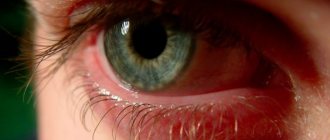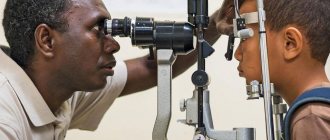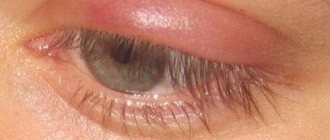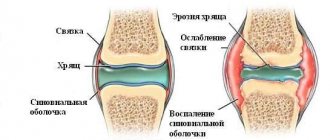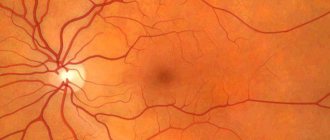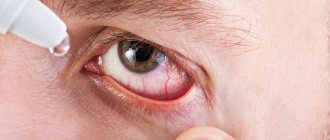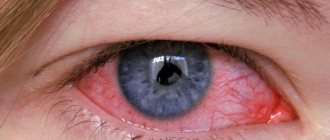Vision is one of the five senses that are very important for humans, because it is thanks to it that we receive approximately 80–90% of the information about the world around us. Thanks to the eyes (the peripheral part of the visual analyzer), the body can convert light into visual images that arise in the cerebral cortex.
Our eyes are a very sensitive organ that immediately responds to external influences or internal pathological changes. Surely each of us has encountered a situation when our eyes begin to water a lot. This can be caused by several reasons, including both physiological and pathological. Let's take a closer look at them.
How does the lacrimal apparatus work in humans?
IMPORTANT! The secretion of tear fluid (tears) occurs constantly, otherwise the mucous membrane of the eyeball would dry out, and a number of problems would arise from which this moisture protects us.
The lacrimal apparatus belongs to the group of auxiliary organs of the eye and consists of 2 parts:
- tear-producing (lacrimal gland);
- lacrimal drainage (nasolacrimal ducts, lacrimal canaliculi, lacrimal sac).
The structure of the lacrimal apparatus in humans
Tear formation occurs in the lacrimal gland. In addition to the main gland, there are also small accessory glands. It is the latter that produce the required amount of moisture per day, and the large organ comes into operation in the event of emotional outbursts, irritation of the nerve endings of the cornea or conjunctiva, as well as the mucous membrane of the nasal cavity. The glands are located inside the orbit, at its upper and outer edges. The fluid from the gland exits into the superior conjunctival fornix and opens through several ducts.
Next, the tear washes the entire front surface of the eyeball and moves from the upper edge to the lower, where a stream is formed that flows into the tear lake at the inner corner of the eye. Next, the tear enters the lacrimal ducts, which open in the nasal cavity.
Tears perform an important function - they form a thin film on the surface of the eyeball, which protects it from the negative influence of environmental factors and drying out. This liquid also has a powerful antimicrobial effect. It contains the enzyme lysozyme, which is capable of destroying a large number of microorganisms. A tear nourishes the cornea of the eye and brings oxygen to it, since the latter is devoid of blood vessels.
Common causes of the symptom
Why does the symptom occur? According to statistics, most often this symptom occurs when foreign bodies get into the eyes or is a response of the mucous membrane to wind, chemical irritants, cosmetics or smoke.
In such situations, in the absence of additional symptoms and visual disturbances, it is enough to wait a while or rinse the eyes with water, and also use folk remedies to soothe irritated eyes.
But there are also pathological reasons for the described disorder that cannot be ignored. These may be the following ophthalmological diseases:
- Conjunctivitis. This disease is characterized by inflammation of the conjunctival membrane, which causes redness of the eyes, photophobia, lacrimation, discharge of purulent formations and a feeling of itching and burning in the eyes.
- Hemorrhage into the subconjunctival vessels that develops with injuries and excessive stress, when the load on the vascular system significantly increases. This can happen during physical activity, during bowel movements or during vomiting, but viral conjunctivitis often leads to such consequences.
- Keratoconjunctivitis. With this disease, an infection of the cornea and conjunctiva occurs. Pathology can occur both when infection enters the organs of vision naturally, and as a result of improper use of contact lenses and violation of the rules for their use.
- Smoothing of the cornea. In such cases, alignment of the corneal epithelium occurs due to injury or due to the use of contact optics. In addition to redness and lacrimation, there is pain and a feeling of the presence of sand or foreign bodies in the eyes.
- Blepharitis. This inflammatory disease spreads in the hair follicles of the eyelashes.
- Iritis. These are inflammatory processes in the iris that occur as a result of injuries or in autoimmune or infectious diseases, when the pathology is a complication of other diseases.
Redness with increased tear secretion may also indicate the development of glaucoma, in which the level of intraocular pressure increases.
As a result, strong pressure is exerted on the tissues of the eyeball and the vascular system.
It is worth noting! Another reason for the development of such a symptom may be scleritis - an inflammatory process in the tissues of the sclera (the outer layer of the organs of vision).
This disease may be an autoimmune disorder or develop due to the activation of pathogenic microflora.
Why do adults' eyes water?
Excessive production of tear fluid, when tears flow onto the face and do not have time to be drained by the lacrimal drainage system, is called epiphora.
There are two mechanisms for the development of tearing:
- hypersecretory, which occurs when excess fluid is produced in the lacrimal glands;
- retention, associated with obstruction of the lacrimal ducts or its disruption.
As a rule, up to 1 ml of tear fluid is produced per day; an increase in this indicator of more than 10 ml is considered abnormal and requires further diagnosis and treatment.
Let's look at why the right and/or left eye is watery.
Tears outside in cool weather or winter
If you involuntarily start to cry in the cold, don’t worry. This is an absolutely normal protective reaction of the body to an external irritant. The liquid actively moisturizes the cornea, preventing it from being damaged by low temperatures.
But you should also remember about such a disease as cold conjunctivitis. This is one of the types of cold allergies. In this case, in addition to lacrimation, there is redness, itching, swelling of the conjunctiva, and attacks of suffocation and a urticaria-type rash may also occur.
Many people experience watery eyes in cold weather, and this is a completely normal protective reaction of the body to low temperatures.
Tears and pain
If your eyes hurt and water at the same time, it is important not to miss the injury. The damage can be microscopic, which is immediately invisible to humans. The cause may be a scratch on the cornea or conjunctiva due to the entry of a foreign body or chemical substance, such as hairspray, perfume, etc.
Why do your eyes water when you yawn?
Tears during yawning are a common process and characteristic of almost all people. The fact is that in the process of yawning, a person’s facial muscles contract, their eyelids close, and this, in turn, promotes the release of tear fluid from the gland.
If your eyes are constantly watering
Sometimes tears drip from the eyes all the time, this picture is especially often observed in older people. This is explained by age-related changes: the periocular muscles lose their previous tone and cannot keep the tear ducts and sac closed, from which a small amount of moisture is constantly released.
If such a symptom is observed regardless of age, it is imperative to consult a doctor, since similar signs can occur in diseases such as infectious lesions of the nose and throat, caries, and pathology of the gastrointestinal tract.
Tears in the morning
Most often, this is a completely normal protective reaction of our body. You need to quickly moisturize the eyeball after a night when drying occurs due to lack of blinking and additional release of portions of fluid.
If you have an air conditioner running at night in your home, you may also suffer from watery eyes in the morning. The fact is that air-conditioned air has low humidity, which is compensated by our body in the form of abundant release of tear moisture.
Sticky tears
Despite the widespread prevalence of dry eye syndrome, many people have not heard of it. The main symptoms: itching, burning, pain in the eyes, pain, redness of the conjunctiva and lacrimation. As paradoxical as it sounds, a dry eye can sometimes be very wet.
In the case of this syndrome, the normal production of the main amount of tears is disrupted, which is released in small portions and actively wets the eyeball. In response to such “dryness,” the second reflex mechanism of tear formation is triggered, which releases tears in large portions to moisturize the eye membranes. But the composition of this tear fluid is different; it cannot fully perform all the necessary functions. And the tears of such people may seem sticky due to the constituent components.
Dry eye syndrome is a common condition that can cause watery eyes.
Tear in the wind
There is a large percentage of people who experience watery eyes in windy weather, and this is quite normal. The eyeball is a very sensitive organ, and wind is a strong irritant. In response to this effect, the lacrimal gland produces more fluid than usual to protect and moisturize the eye, which is manifested by the release of tears just like that. If, after you enter a room where there is no wind, tears stop rolling from your eyes, everything is normal, but if the “crying” does not stop, you need to consult an ophthalmologist.
Why do eyes turn red and watery?
Most often, this situation indicates some kind of ophthalmological disease, for example, conjunctivitis. The latter can be caused by infectious pathogens (bacteria, viruses, fungi, parasites) and nonspecific (non-infectious factors): allergic exposure, mechanical or chemical influence. As a rule, in most cases viral, bacterial and allergic conjunctivitis is diagnosed.
With conjunctivitis, the eyes become watery, red, baked and itchy, and various discharges also appear.
One eye is crying
If the discharge of tears is observed only from one eye, the causes of such symptoms may be:
- traumatic injuries;
- foreign body;
- allergic reaction;
- chronic blepharitis;
- diseases of the nasal cavity and paranasal sinuses;
- neurological diseases;
- trichiasis (disorder of normal eyelash growth).
ATTENTION! If a person experiences constant tearing from only one eye, it is imperative to visit an ophthalmologist, a neurologist, an allergist and an ENT doctor.
Tears after contact lenses
If you experience watery eyes after wearing soft or hard contact lenses, this is a sure sign that something has gone wrong. Among the reasons include incorrectly selected contact lenses (contact lenses) - the wrong dioptres, inappropriate diameter and base curvature, as well as neglect of the rules for caring for contact lenses and wearing them, individual intolerance to the material or multifunctional solution for the care and storage of lenses, microscopic specks on contact lenses, contact with infections.
Other reasons
Other causes of involuntary tears include:
How to remove swelling from the eyes after crying
- hypovitaminosis (lack of vitamins, especially A and group B);
- acute respiratory diseases;
- cataract;
- demodicosis;
- keratoconus;
- glaucoma;
- migraine;
- corneal injuries;
- stressful situations;
- hay fever;
- hay fever;
- computer vision syndrome;
- farsightedness and myopia, astigmatism;
- diseases of the thyroid gland (diffuse toxic goiter, thyrotoxicosis);
- ectropion (inversion of the eyelid);
- facial paralysis;
- barley;
- keratitis;
- tumors;
- use of certain medications;
- Stevens-Johnson syndrome.
Purpose of treatment
In case of severe tearing of the eyes, treatment is prescribed only by an experienced specialist who will examine the patient and find out the cause of excessive tear production. To eliminate the problem, the following treatment methods can be used:
Medication method
In this case, medications are selected depending on the results of the patient’s examination. Anti-inflammatory and vasoconstrictor drugs are prescribed, sometimes the use of antihistamines or ointments of various effects is required:
- Effective medications are Cromohexal and Allergodil, which are prescribed to combat lacrimation that begins as a result of contact with an allergen.
- To eliminate the problem, the doctor may recommend eye drops “Vidisik”, “Vial”, “Hypromellose”, which have a vasoconstrictor effect and relieve irritation
- If tears flow due to conjunctivitis caused by bacteria, use Tetracycline ointment, Vitabact, Oftadex, Gentamicin, Tobrin, etc.
- For viral conjunctivitis, Florenal, Tebrofen, Okacin, etc. are prescribed.
- If the patient is allergic to cold, Lecrolin or Dexamethasone is prescribed.
- If you experience frequent eye fatigue, it is advisable to always have an “Artificial tear” with you.
- To prevent inflammation after surgery and combat lacrimation, Okomistin may be prescribed.
Prescription of surgery
If pathologies are identified, the doctor prescribes surgical intervention, which effectively and quickly solves the problem of tearing of the eyes. Sometimes surgery is resorted to due to the lack of good results from conservative therapy, when a radical method is the only way out in the current situation.
Return to contents
Traditional methods for eliminating watery eyes
Traditional medicine gives several tips to combat severe lacrimation:
- Try making compresses with freshly brewed black tea, which can quickly relieve inflammation and moisturize the conjunctiva.
- Prepare a decoction of cumin. To do this, take one spoon of seeds and add a glass of boiling water. Let the broth cool and place a few drops in your eyes daily.
- You can prepare a millet broth. Take 2 tablespoons of cereal and add 1 liter of boiling water. Boil the millet (about 10 minutes) and wait until the liquid cools. Rinse your eyes before going to bed or apply a compress for a few minutes. In two weeks you will see significant improvements, and your eyes will stop watering in the cold
- Use decoctions of chamomile and cornflower, which relieve inflammation and have a mild antiseptic effect.
Tearfulness in a child
If lacrimation is observed in a newborn baby, the first step is to exclude congenital obstruction of the lacrimal canaliculus and dacryocystitis (inflammation of the lacrimal sac). When the fetus develops in the womb, its tear ducts are delimited by peculiar “gelatin” films. Why is this necessary? First of all, in order to prevent amniotic fluid from entering them. This film breaks at the moment of birth of the baby with his first cry, but sometimes this does not happen, and then you have to deal with obstruction of the lacrimal ducts and dacryocystitis.
As a rule, this disease is not dangerous; it goes away on its own during the first 6 months of life. If this does not happen, the nasolacrimal duct is probed at the age of 1–2 years. If dacryocystitis occurs with complications (suppuration, phlegmon of the lacrimal sac), then probing is carried out at an early age (2–3 months).
Antiallergic drops
"Allergodil" Liquid for eliminating allergy symptoms, relieves excessive lacrimation, hyperemia and swelling of the mucous membrane, itching of the eyelids, discomfort, sensation of a foreign body in the eyes. The main active component of the drops is azelastine hydrochloride (50 mcg per 1 ml). The product is suitable for the effective treatment of seasonal allergic manifestations, especially in the case of a reaction to flowering plants, when tear fluid is released in large quantities. Allergodil has a prolonged period of action and is well tolerated even in childhood. These drops can be used for a long time without adverse reactions or addiction.
"Opatanol" Antiallergic drug with double action. Blocks receptors sensitive to histamine, which is a provocateur of allergic and inflammatory reactions in the body. The drops stop the development of inflammation, reducing swelling, itching, and lacrimation. "Opatanol" has an effect on mast cells (granulocytes). It prevents the release of active substances that provoke an inflammatory reaction. This property distinguishes it from antihistamines, the side effect of which was the lysis (destruction) of granulocytes. The drug shows effectiveness in treating many types of allergic reactions. Suitable for a long period of treatment (but not more than 4 months). Indications for use: hay fever, seasonal and viral conjunctivitis, keratitis. Before instillation, the bottle of liquid must be warmed in your hand for several minutes and then shaken well.
"Ketotifen" This drug is available in the form of drops, tablets and syrups (for the treatment of children over 12 years old). In addition to its antiallergic effect, it also eliminates the symptoms of inflammation and stabilizes the condition of mast cell membranes, preventing the spread of histamines, which cause an irritant reaction. The drug is also a prophylactic agent, and for chronic forms of hay fever it is recommended to use it 3-4 weeks before flowering. This helps to significantly reduce the manifestations of allergic reactions, including lacrimation. If instillations are carried out at the same time each time, the effect of use will be much higher. Despite its strong therapeutic effect, Ketotifen is characterized by a large number of adverse reactions. If, when using the drops, you feel a headache, runny nose, dryness, or rashes in the eye area, then you should stop using them immediately and contact a specialist to prescribe another remedy.
Antihistamine drops also have general contraindications for use: glaucoma, infectious eye diseases, patient age, hypersensitivity to individual components. During the instillation period, it is unacceptable to wear contact lenses - you need to replace them with glasses.
Children's antiallergic drops If a child develops allergy symptoms (most often it is seasonal hay fever), the specialist will prescribe drops that will be safe for the child's body. These are the drugs “Lecrolin”, “Opatanol”, “Albucid”, “Azelastine”. Each age has its own remedy, so only a doctor can prescribe it after examination.
How to treat lacrimation
What to do if your eyes are watery? Naturally, the first step is to establish the cause of this symptom. And for this you need to consult an ophthalmologist.
Treatment for tearing depends on the cause, so any patient experiencing this discomfort should be examined by an ophthalmologist.
Treatment will depend on the underlying diagnosis. If “constant crying” is caused by the negative impact of environmental factors, you should get rid of them (remove the allergen, protect your eyes from dust, wind, etc.). If the specialist has determined that the eyes are watering due to infection, hypovitaminosis, obstruction of the lacrimal ducts, or other reasons, then appropriate treatment will be prescribed, for example, for infections, antibacterial, antiviral and other antimicrobial agents are prescribed, for allergies, antihistamine drops are used, and in In case of obstruction, surgical treatment is resorted to.
What do you need to know when using medicinal drops?
The causes of increased lacrimation can be very different; we have listed them above. You should not engage in self-diagnosis, but you need to visit a specialist to determine the etiology of this phenomenon. If during therapy unpleasant sensations occur in the eye area, especially when pus and inflammation appear, instillations should be stopped immediately and consult a specialist for advice. He will identify the cause and prescribe another drug. Remember - only competent and timely treatment can bring the expected effect.
MagazinLinz.ru team
